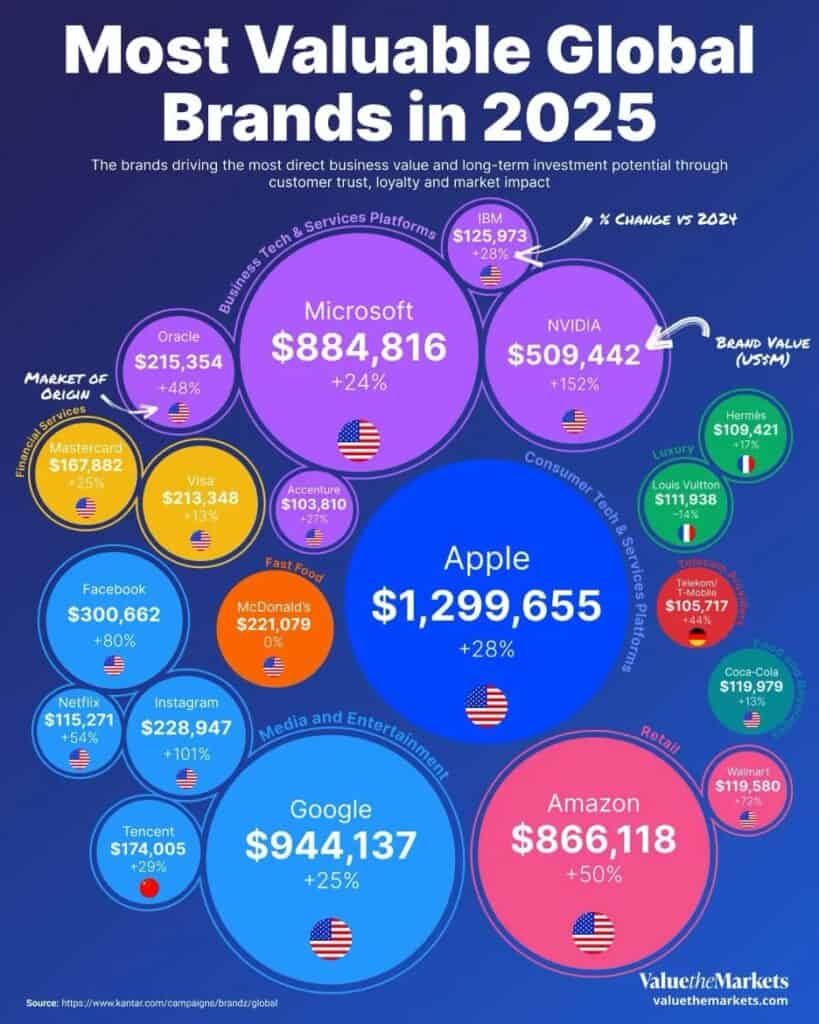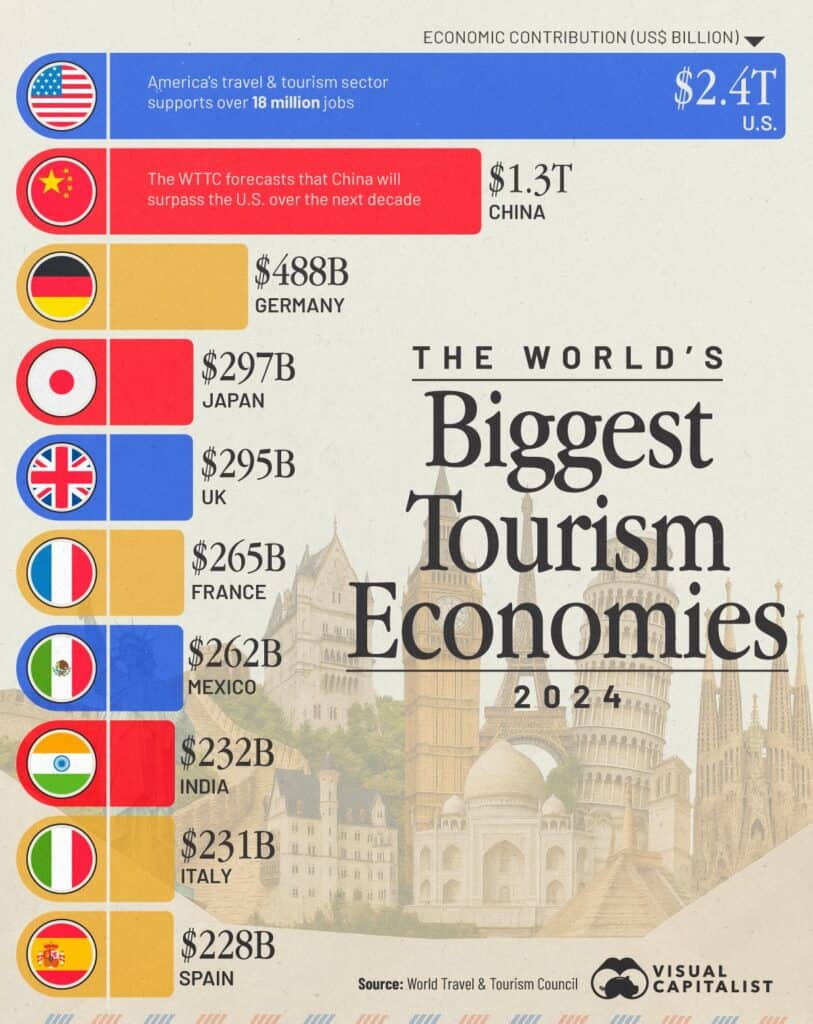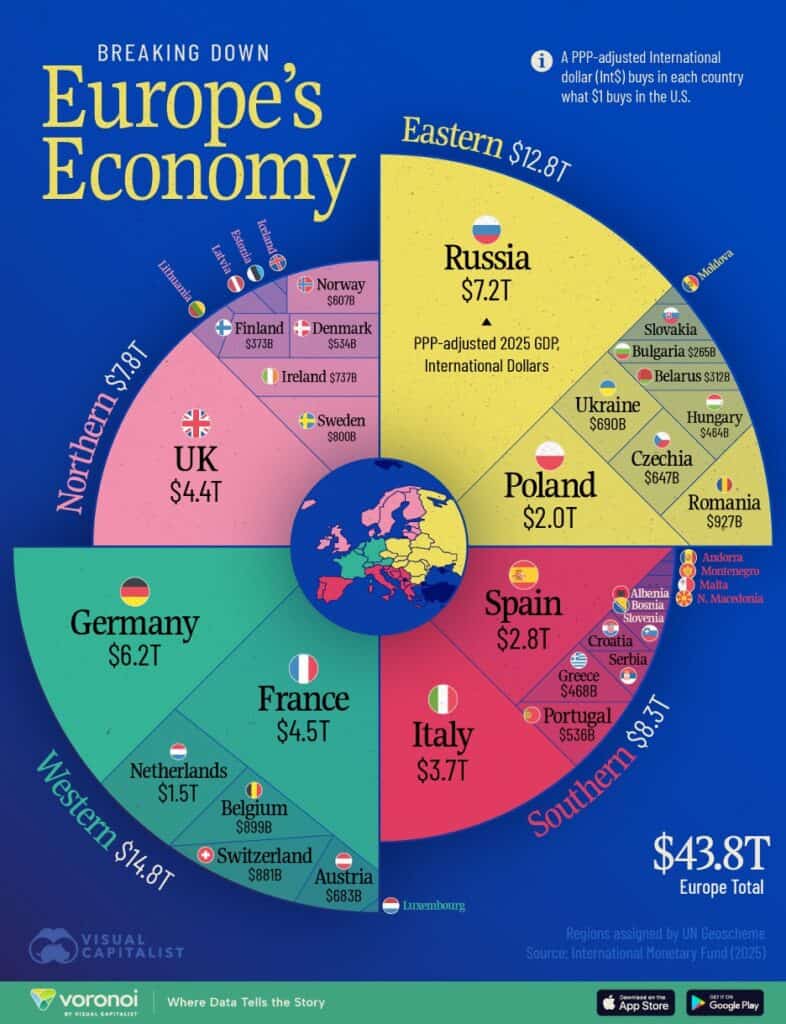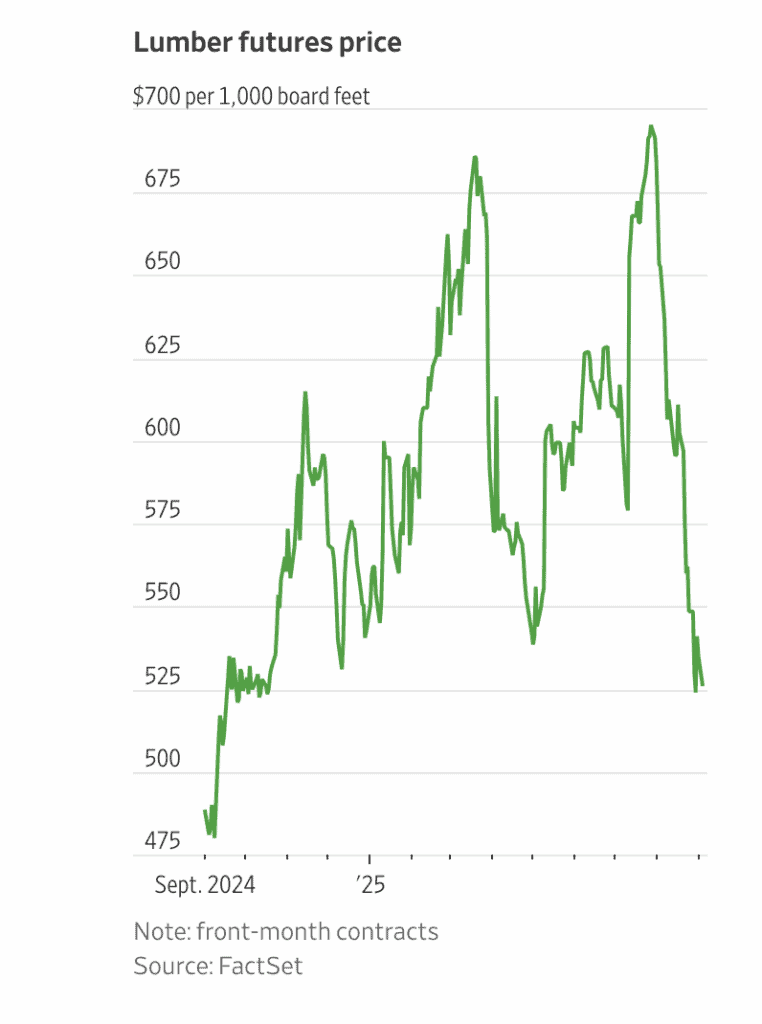“Protectionism is back in force, but global opportunity remains for those who adapt.”
Welcome to the 143rd Edition of the Global Business Update – – The theme of this edition reflects a statement by Larry Fink, CEO of BlackRock: “Protectionism is back in force.” This captures a defining reality of 2025. While globalization is far from over, its shape is changing. National interests, trade barriers, and geopolitical rivalries are reshaping supply chains and investment flows, creating both new obstacles and unexpected openings for global companies.
We see this contrast everywhere. Global brand value has reached a record $10.7 trillion, with artificial intelligence driving growth well beyond the tech sector. At the same time, foreign direct investment has fallen for the second year in a row, reflecting caution among investors navigating tariffs, regulatory shifts, and political uncertainty. For global franchisors and investors, the message is clear: opportunity remains robust, but adaptation is essential.
Examples abound. Coffee prices in U.S. supermarkets are at their highest since the 1990s due to tariffs, while soybean demand has shifted away from U.S. growers toward South America. Europe continues to negotiate its long-delayed Mercosur pact, Morocco is emerging as a new manufacturing hub, and Saudi Arabia is positioning itself as a global leader in solar power.
Global franchising continues to evolve with both growth opportunities and new challenges. Captain D’s is expanding beyond the U.S. with plans for entry into the United Kingdom and Canada, reflecting how strong operational results at home can fuel international ambitions. At the same time, franchise executives emphasize that while new market entry is exciting, long-term success depends on maintaining strong relationships with existing partners. Your Editor’s just published article on adapting franchise brands abroad and my article on U.S. franchisors facing persistent non-tariff barriers, reinforcing the need for due diligence and strong local partnerships abroad are in this edition.
This issue’s book Chokepoints: American Power in the Age of Economic Warfare – Summary & Insights by Edward Fishman, a former U.S. State Department sanctions strategist, argues in Chokepoints that global business has entered a new era where power is exercised not through tariffs or armies alone, but through the control of economic chokepoints — the critical supply chains, technologies, and financial systems that underpin globalization.
+++++++++++++++++++++++++++++++++++++++++++++++++++++++++++++++++++++++++++++++++++++++++
The mission of this newsletter is to use trusted global and regional information sources plus our network of 20+ in-country Associates to update our global readers on key global and local trends that can impact the success of their businesses at home and abroad. We subscribe to about 40 international information sources to keep our readers up to date on the world’s business. We do not get involved with or report on politics!
PLEASE NOTE: Some of the information sources that we provide links to in our newsletter require a paid subscription to directly access them. Clicking on a link may not give the reader access to the content.
Edited and curated by: William (Bill) Edwards, CEO & Global Business Advisor, Edwards Global Services, Inc. (EGS), Irvine, California, USA. Contact Bill with questions, comments and contributions. Bedwards@edwardsglobal.com, +1 949 375 1896
Link to our current and past newsletters: https://edwardsglobal.com/geowizard/
+++++++++++++++++++++++++++++++++++++++++++++++++++++++++++++++++++++++++++++++++++++++++
First, A Few Words of Wisdom From Others For These Times
“Protectionism is back in force, but global opportunity remains for those who adapt.”, Larry Fink, CEO of BlackRock
“AI is no longer a side project — it’s reshaping the way global business operates.”, Satya Nadella & McKinsey reports)
“Uncertainty is now a persistent reality for business leaders… draw on ‘muscle memory’ — past lessons and experiences — to navigate challenges.”, Janet Truncale, EY Global Chair & CEO
++++++++++++++++++++++++++++++++++++++++++++++++++++++++++++++++++++++++++++++++++++++++
Highlights in issue #143:
The Most Valuable Global Brands in 2025
The Biggest Tourism Economies in 2024
The Size of European Economies by GDP (PPP) in 2025
Chinese Public Wants a Balanced Approach to the United States
Non-Tariff Barriers Faced by U.S. Franchisors Expanding Internationally
Brand Global News Section: Captain D’s®, Costa Coffee®, McDonalds®, Potbelly® and Starbucks®
++++++++++++++++++++++++++++++++++++++++++++++++++++++++++++++++++++++++++++++++++++++++
Interesting Data, Articles and Studies
“The Most Valuable Global Brands in 2025 – Artificial intelligence is rewriting the rules of brand growth, and it’s not just the tech giants that are benefiting. According to the 2025 Kantar BrandZ rankings, Apple, Google, Microsoft, Amazon, and NVIDIA continue to dominate the leaderboard, but AI-driven momentum is boosting brand value across retail, media, and other sectors as well. Global brand value jumped 29% in the past year, reaching a record $10.7 trillion. While tech brands continue to lead, sectors like retail, luxury, finance, and telecom also secured top 20 positions. Together, the rankings reveal how consumer trust, innovation, and investor sentiment are shaping the global marketplace in 2025; and where retail investors may want to keep a closer watch.”, Kantar.com, September 12, 2025
+++++++++++++++++++++++++++++++++++++++++++++++++++++++++++++++++++++++++++++++++++++++++++++
“Global Investment Keeps Falling – For the second straight year, FDI fell by double digits. According to the U.N. Trade and Development organization, global foreign direct investment (FDI) dropped 11 percent in 2024. Much of the decline can be explained by trade tensions and rising uncertainty. With investor uncertainty still high, the outlook for 2025 is pessimistic as well. Closer inspection reveals some bright spots, however. For instance, although FDI flows to developed economies fell by 22 percent in 2024, investment in developing countries was stable. As a result, developing economies’ share of FDI inflows rose to 58 percent from 51 percent a year earlier. Ten countries (including China, Brazil, Mexico, Indonesia and India) accounted for roughly three-fourths of these inflows. Similarly, investment in the digital economy increased by double digits, outpacing global GDP growth.”, Geopolitical Futures, September 5, 2025
+++++++++++++++++++++++++++++++++++++++++++++++++++++++++++++++++++++++++++++++++++++++++++++
Global Supply Chain, Energy, Commodities, Inflation, Taxes & Trade Issues
“US coffee prices surge at the supermarket amid supply crunch – Donald Trump’s tariffs on Brazil are poised to compound the fastest cost increase since the 1990s. US retail coffee prices have posted the steepest year-on-year rise of this century, as tariffs on imports from Brazil, the world’s biggest producer, are poised to compound the effects of a global supply shortage. Ground coffee hit a record $8.87 a pound at groceries in August, while a consumer price index for coffee rose 21 per cent year on year, the fastest pace since 1997, according to data published on Thursday by the US Bureau of Labor Statistics. Global coffee markets have soared over the past year after poor harvests in major exporting countries drove down production.”, The Financial Times, September 11, 2025
=============================================================================================
“US misses out on billions of dollars of China soybean sales midway through peak season – South American soybeans cover 95% of China’s October demand. US faces potential export loss of 14 mln-16 mln tons. USDA may pare 2025/26 US soybean export forecast. South American soybeans cover 95% of China’s October demand. US faces potential export loss of 14 mln-16 mln tons. U.S. farmers are missing out on billions of dollars of soybean sales to China halfway through their prime marketing season, as stalled trade talks halt exports and rival South American suppliers step in to fill the gap, traders and analysts said. Chinese importers have booked around 7.4 million metric tons of mainly South American soybeans for October shipment, covering 95% of China’s projected demand for the month and 1 million tons for November, or about 15% of expected imports, according to two Asia-based traders.”, Reuters, September 10, 2025
++++++++++++++++++++++++++++++++++++++++++++++++++++++++++++++++++++++++++++++++++++++++++++++
Global & Regional Travel News
“The Biggest Tourism Economies in 2024 – The above graphic shows how America’s tourism economy is the largest globally by far—contributing $2.4 trillion to the country’s GDP in 2024, or about 3% of the total. While many international tourists are shunning America this year given trade rifts, travel data shows that its impact is mixed across U.S. regions. While Boston, Chicago, and New York are seeing at least 7% declines in international arrivals, Florida has seen an increase compared to last summer. China stands as the second-largest tourism economy worldwide at $1.3 trillion, surpassing Germany by more than twofold. If we look at India, its $232 billion tourism economy now ranks in eighth globally, surpassing Spain and Italy as the country saw record international visitor spending in 2024.”, World Travel & Tourism Council, July 6, 2025
+++++++++++++++++++++++++++++++++++++++++++++++++++++++++++++++++++++++++++++++++++++++++++++++
Book Review
Chokepoints: American Power in the Age of Economic Warfare – Summary & Insights by Edward Fishman, a former U.S. State Department sanctions strategist, argues in Chokepoints that global business has entered a new era where power is exercised not through tariffs or armies alone, but through the control of economic chokepoints — the critical supply chains, technologies, and financial systems that underpin globalization.
Fishman highlights how chokepoints such as semiconductor production, global shipping lanes, rare earth minerals, and financial clearing systems are increasingly being weaponized. The book shows how governments, especially the U.S., use sanctions, export controls, and regulatory dominance to advance national security goals. For businesses, this means that global operations are no longer shaped solely by markets — but also by geopolitics.
For corporate leaders, Fishman’s message is clear: recognize chokepoints, prepare for sudden disruptions, and build resilience before crises hit.
Five Takeaways for Global Business Leaders
Geopolitics is embedded in supply chains – sourcing decisions must factor in political stability, not just cost.
Financial flows are chokepoints – U.S. dominance in banking and the dollar gives Washington powerful levers.
Technology is a frontline – export controls on semiconductors or AI can reshape entire industries overnight.
Resilience beats efficiency – companies need redundancy and diversification, even at higher cost.
Scenario planning is essential – boards should stress-test against chokepoint disruptions just as they do for cybersecurity.
+++++++++++++++++++++++++++++++++++++++++++++++++++++++++++++++++++++++++++++++++++++++++
Country & Regional Updates
China
“US-China tensions drive business confidence to new lows, survey says – Record low optimism in five-year China business outlook. Geopolitics, domestic competition, economic slowdown are biggest challenges. US-China tariffs expected to impact 2025 revenue for 64% of firms. Political tensions, fierce domestic competition and China’s slowing economic growth are sapping the confidence of U.S. businesses in the country, with optimism about their five-year outlook falling to a record low, a survey showed. Only 41% of U.S. firms were optimistic about their five-year China business outlook, a drop of six percentage points from last year, according to the survey published on Wednesday by the American Chamber of Commerce in Shanghai. This was the weakest level of optimism reported since the AmCham Shanghai Annual China Business Report was introduced in 1999.”, Reuters, September 9, 2025
================================================================================================
“Chinese Public Wants a Balanced Approach to the United States – Few see the United States as a friend to China, but a majority want Beijing to use a mix of cooperation and containment in its approach to Washington. New research conducted by the Chicago Council on Global Affairs and The Carter Center offers a rare window into the attitudes of everyday Chinese citizens on international affairs. Most Chinese (61%) say China should pursue a dual-pronged approach to the United States, undertaking either friendly cooperation or limiting US power when appropriate. The Chinese public is divided over which country—China or the United States—is stronger economically or militarily. Those who see the United States as a stronger economic power are more likely to favor friendly cooperation with the United States (32% vs. 23% overall). Those who see China as stronger are more likely to favor actively limiting American power (25% vs 15% overall). The top two perceived threats to China both involve the United States: 57 percent say a US-China conflict over Taiwan is a major threat, and 55 percent say economic competition with the United States is a major threat. Most Chinese say trade between China and the United States does more to strengthen China’s national security (71%) than it does to weaken it (28%).”, Chicago Council on Global Affairs, September 2, 2025
=============================================================================================
European
“The Size of European Economies by GDP (PPP) in 2025 – Western Europe makes up the largest portion of the $43.8 trillion PPP-adjusted European economy, when measured in International dollars. Eastern Europe ($12.8T) outperforms both Northern ($7.8T) and Southern Europe ($8.3T) in PPP terms, helped in large part by the Russian economy ($7.2T). However, by nominal USD terms, Eastern Europe is the smallest ($4.6T), outweighed by just the Germany economy ($4.7T). While many people picture Europe’s prosperity through the lens of its Western powerhouses, a closer look at Europe’s GDP by region reveals a more nuanced regional picture. The visualization breaks down purchasing-power-parity (PPP)-adjusted output in 2025, showing how different parts of Europe contribute to the continent’s collective wealth.”, Visual Capitalist & the International Monetary Fund, September 9, 2025
=============================================================================================
“EU Pushes Ahead to Ratify Trade Deal With South American Nations – The European Union is advancing its efforts to ratify a proposed trade deal with Mercosur countries by the end of the year after proposing safeguard measures. The EU and the Mercosur nations (Argentina, Brasil, Uruguay and Paraguay) completed talks on a preliminary agreement in December after more than two decades of negotiations. Ratification of the agreement would create an integrated market of 780 million consumers, providing a boost to the EU’s embattled manufacturing sector and Mercosur’s vast agricultural industry. The agreement needs approval by the European Parliament and a qualified majority of its 27 member states, and some countries, including France and Poland, have expressed reservations about the deal’s impact on the European agricultural sector.”, Bloomberg, September 3, 2025
===========================================================================================
Morocco
“Morocco is now a trade and manufacturing powerhouse – The country’s ports and factories are humming. Morocco’s position on Europe’s southern doorstep (and as a northern entry to Africa) has helped it insert itself into global supply chains. Foreign investment has risen swiftly. According to fdi Markets, a data firm, the country has drawn about $40bn of greenfield manufacturing investment since 2020, catapulting itself into the list of the world’s largest recipients. The country’s officials attribute this success to the investor-friendly policies of King Muhammad vi, Morocco’s leader. To please overseas businesses, his government has poured money into electricity generation, ports, railways, roads and solar facilities. It spent between 25% and 38% of gdp a year on infrastructure from 2001 to 2017, which is among the most in the world.”, The Economist, September 4, 2025
=============================================================================================
Saudi Arabia
“Oil Giant Saudi Arabia Is Emerging as a Solar Power – The kingdom is betting that sunshine can power new AI data centers and help boost oil exports. Saudi Arabia is rapidly expanding its solar power capacity, aiming for 50% clean energy by 2030 to power new projects. The shift is driven by the falling costs of Chinese solar panels and batteries, making solar a cost-effective alternative to burning oil. The world’s ultimate petrostate is turning to solar power. Saudi Arabia is building some of the world’s biggest solar farms, along with giant arrays of batteries to store their electricity till after dark. The rapid rollout is making the country into one of the fastest-growing markets for solar power from a near-standing start. Saudi Arabia’s ACWA Power is undertaking power projects in Africa and Asia, exploring sending electricity to Europe in the future.”, The Wall Street Journal, September 10, 2025
============================================================================================
United States
“US Small-Business Optimism Edges Higher on Better Sales Outlook – Sentiment among US small businesses edged higher in August, led by the most favorable sales expectations in six months as owners grew more sanguine about the health of their companies. A net 12% of owners expect higher retail sales volumes in the next three months, up 6 points and contributing the most to the increase in the overall optimism index. The group’s uncertainty index fell by 4 points to 93 last month, but that was still the 11th highest reading in more than 51 years, according to NFIB. When asked to rate the overall health of their business, 68% of owners said it as either excellent or good, up from last month, while 31% said it was either fair or poor, down from July.”, Bloomberg, September 9, 2025
============================================================================================
“Lumber Prices Are Flashing a Warning Sign for the U.S. Economy – Wood prices are sliding and mills are cutting back because of uncertainty over tariffs and a building slump. Falling lumber prices are sounding an alarm on Wall Street about potential problems on Main Street. Wood markets have been whipsawed of late by trade uncertainty and a deteriorating housing market. Futures have dropped 24% since hitting a three-year high at the beginning of August and ended Monday at $526.50 per thousand board feet. The price drop might have been greater—but two of North America’s biggest sawyers said last week that they would curtail output, slowing the decline. Crashing wood prices are troubling because they have been a reliable leading indicator on the direction of the housing market as well as broader economic activity.”, The Wall Street Journal, September 8, 2025
==============================================================================================
Vietnam
“Vietnam Accelerates IPOs, Enables Higher Foreign Stock Ownership – Vietnam is rolling out a series of regulatory reforms aimed at attracting more overseas investors into its stock market, which has outperformed regional peers this year. A newly-issued decree eliminates the ability of public companies to unilaterally impose foreign ownership limits that are lower than those allowed by domestic law or international agreements…. Vietnam has taken a series of steps to boost the attractiveness of its equities to global funds in recent years, including seeking to be classified as an ‘emerging market’ by the FTSE Russell indexes.”, Bloomberg, September 13, 2025
++++++++++++++++++++++++++++++++++++++++++++++++++++++++++++++++++++++++++++++++++++++++++
The Accredited Franchise Supplier certification
+++++++++++++++++++++++++++++++++++++++++++++++++++++++++++++++++++++++++++++++++++++++++++++
Global Brand & Franchise Sector News
“Potbelly Sandwich Chain to Sell Itself to Convenience-Store Operator RaceTrac – The $566 million deal is expected to close this year; companies don’t plan to ‘put a Potbelly in every RaceTrac’. Potbelly Chief Executive Robert Wright said that Potbelly and RaceTrac would remain distinct brands after the deal closes. ‘Their strategy isn’t necessarily to put a Potbelly in every RaceTrac,’ he said. Rather, Wright said, the sandwich brand hopes the new ownership will help it reach its goal of 2,000 stores. Potbelly currently operates more than 445 stores across the U.S.”, The Wall Street Journal, September 10, 2025
==============================================================================================
“Adapt Without Compromise – When Franchises Reinvent Themselves Abroad – Franchising internationally isn’t just about exporting a proven concept—it’s about transforming that concept for a different world while maintaining brand integrity. Brands that thrive overseas are those that make smart, respectful changes without compromising their identity. The more thoughtfully you adapt, the more successfully you scale in other countries. Here are some standout examples of brands that didn’t just adjust; they reinvented themselves for success in a new culture while maintaining brand integrity.”, Franchise Update, 3rd Quarter 2025. Article. By William Edwards, Editor
=============================================================================================
“The Seafood Chain That Could Be Swimming Towards A Comeback – As of 2025, Captain D’s operates over 530 locations across 23 states, with state number 24 on the agenda for this year as part of an expansion plan into more northeastern states. Competitor seafood restaurants may have struggled financially during the COVID-19 pandemic, but Captain D’s emerged victorious, “enjoying double-digit sales and double-digit traffic,” according to a press release. Thanks to changes in business operations and restaurant layout, Captain D’s is on track to expand into the United Kingdom and Canada over the next few years, as well as continuing expansion domestically.”, Tasting Table, September 6, 2025
==============================================================================================
“From Renewal to Launch: How Strong Master Franchise Relationships Fuel Further Global Expansion– Taking a successful franchise brand abroad for the first time is filled with excitement and nerves. When the brand continues its international growth trajectory, each new country comes with the same level of excitement, along with greater confidence and less anxiety. But beyond simply planting flags in new international markets, it’s essential for a franchisor to not lose sight of their existing partnerships, ones they’ve already spent years nurturing and growing. Those established agreements must remain strong and relevant as their success will eventually serve as the foundation for each new developing market.”, Franchising.com, September 12, 2026. Article by Larisa Walega, the chief growth officer of Ziebart International Corporation.
=============================================================================================
“Drive-thru operator could switch from Starbucks to Costa Coffee – Coca-Cola may sell coffee chain for as little as £2 billion. Britain’s biggest Starbucks operator is weighing an audacious move to jettison its sites to unlock a cut-price swoop on rival Costa Coffee. EG Group, owned by private equity firm TDR Capital and Blackburn forecourt tycoons Mohsin and Zuber Issa, is understood to be considering proposals to sell the franchise rights to the 140 Starbucks “drive-thru” and “drive-in” sites that it operates across the UK. EG must do so to allow it or TDR to bid for Costa, whose owner, Coca-Cola, has begun sounding out potential suitors.”, The Times of London, September 6, 2025
=============================================================================================
“McDonald’s Escalates Restaurant Industry’s Fight Over Tipping – Burger giant says all workers should receive a base wage, including tipped servers employed by rivals. McDonald’s opposes wage rules allowing restaurants to pay tipped workers below the standard minimum wage. CEO Chris Kempczinski says all workers should earn at least the minimum wage, regardless of tips received. The McDonald’s critique aligns it with labor groups advocating against tipped wages. McDonald’s has gone so far as to withdraw from the National Restaurant Association, the industry’s main U.S. trade group, as a result of its stance on the tipped wage and other issues.”, The Wall Street Journal, September 4, 2025
===========================================================================================
“Non-Tariff Barriers Faced by U.S. Franchisors Expanding Internationally – When U.S. franchisors expand into new international markets, they often encounter non-tariff barriers that can significantly impact their ability to establish and grow. Unlike tariffs, which are direct taxes on imports, non-tariff barriers include regulatory, cultural, and operational challenges that vary by country. Understanding and addressing non-tariff barriers is critical for U.S. franchisors to succeed internationally. Comprehensive due diligence, market assessments, and strong local partnerships are key strategies for overcoming these challenges.”, William Edwards, September 12, 2025
++++++++++++++++++++++++++++++++++++++++++++++++++++++++++++++++++++++++++++++++++++++++++++++
To receive our biweekly newsletter in your email every other Tuesday, click here – https://insider.edwardsglobal.com
+++++++++++++++++++++++++++++++++++++++++++++++++++++++++++++++++++++++++++++++++++++++++++++++
Our Mission, Information Sources & Who We Are
Our biweekly global business update newsletter focuses on what is happening around the worldthat impacts new trends, health, consumer spending, business investment, the franchise sector, economic development, and travel. We daily monitor 30+ countries, 40+ international information sources and six business sectors to keep up with what is going on in this ever-changing business environment. And our GlobalTeam on the ground covering 25+ countries provide us with updates about what is actually happening in their specific countries. We do not get involved in or report on politics!
on the ground covering 25+ countries provide us with updates about what is actually happening in their specific countries. We do not get involved in or report on politics!
+++++++++++++++++++++++++++++++++++++++++++++++++++++++++++++++++++++++++++++++++++++++++++
William “Bill” Edwards: Global Advisor Is Uniquely Qualified to Steer Sr. Executives Successfully Through the Complex Waters of Going Global. With four decades of successful international business experience spanning virtually every corner of the world and many business sectors, Bill Edwards understands the global business landscape like no other. He has been a County Master Franchisee in five countries in Asia, Europe, and the Middle East; the Senior VP for a franchisor operating in 15 countries and a full-service consultant since 2001 taking 40+ companies global.
For a complimentary 30-minute consultation on how to take your business into new countries and make money doing it. For a complimentary call with Bill Edwards click on the QR code or contact Bill at bedwards@edwardsglobal.com and +1 949 375 1896














